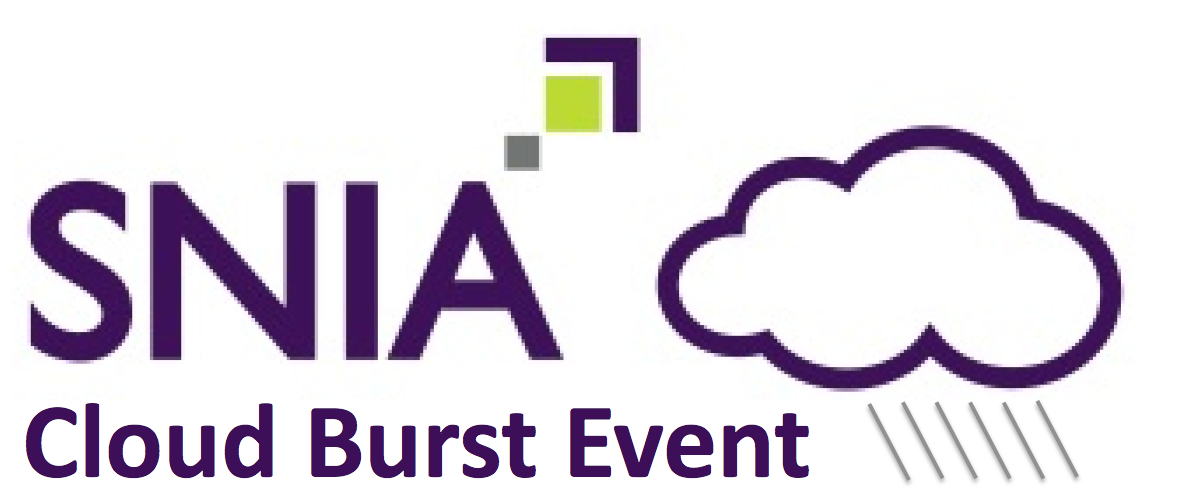In a number of recent presentations on cloud storage recently, I have started by asking the audience “how many of you use DropBox?” I have seen rooms where more than half of the hands go up. Of course, the next question I ask is “does your corporate IT department know about this?” – sheepish grins abound.
DropBox has been responsible for for a significant fraction of the growth in the number of Amazon S3 objects – that’s where the files end up when you drop them into that icon on your laptop, smartphone or tablet. However, if that file is a corporate document, who is in charge of making sure the data and its storage meets corporate policies for protection, privacy, retention and security? Nobody.
Thus there is now growing interest in bringing that data back in-house and on premise for the enterprise so that business policies for the data can be enforced. This trending meme has been termed “Enterprise Dropbox”. The basic idea is to offer the equivalent service and set of applications to allow corporate IT users to store their corporate documents where the IT department can manage them.
Is this “Private Cloud”? Well, yes in that it uses capitalized corporate storage equipment. But it also sits “at the edge” of the corporate network so as to be accessible by employees wherever they happen to be. In reality, Enterprise DropBox needs to be part of an overall Bring Your Own Device (BYOD) strategy to enable frictionless innovation and collaboration for employees.
Who are likely to be the players in this space? Virtualization vendors such as Citrix (with its ShareFile acquisition) and VMware with its Project Octopus initiative look to be first movers in this space, along with start ups such as Oxygen Cloud. It’s interesting that major storage vendors have not picked up on this as yet.
Digging into how this works, you find that every vendor has a storage cloud with an HTTP based object storage interface that is then exposed to the internet with secure protocols. Each interface is just slightly different enough that there is no interoperability. In addition, each vendor develops, maintains and distributes it own set of client “apps” for operating systems, smartphones and tablets. A key feature is integration of the authentication and authorization with the corporate LDAP directory both for security and to reduce administrative overhead. Support for quotas and department charge back is essential.
Looking down the road, however, this proliferation of proprietary clients and interfaces is already causing headaches for the poor device user, who may have several of these apps on their devices (all maxed out to their “free” limit). The burden on vendors is the development cost of creating and maintaining all those applications on all those different devices and operating systems. We’ve seen this before, however, in the early days of the Windows ecosystem. You used to have to purchase a separate FTP client for early Windows installations. Want NFS? A separate client purchase and install. Of course, now all those standard protocol clients are built into operating systems everywhere. Nobody thinks twice about it.
The same thing will eventual work its way out in the smart device category as well. But not until a standard protocol emerges that all the applications can use (such as FTP or NFS in the Windows case). The SNIA’s Cloud Data Management Interface (CDMI) is poised to meet this need as it’s adoption continues to accelerate. CDMI offers a RESTful HTTP object storage data path that is highly secure and has the features that corporate IT departments need in order to protect and secure data while meeting business policies. It enables each smart device to have a single embedded client to multiple clouds – both public and private. No more proliferation of little icons all going to separate clouds.
What will drive this evolution? You – the corporate customer of these vendor offerings. You can ask the Enterprise DropBox vendors simply to “show me CDMI support in your roadmap”. Educate your employees about choosing smart devices that support the CDMI standard natively. Only then will the market forces compel the vendors to realize that there is no value in locking in their customers. Instead they can differentiate on the innovation and execution that separates them from their competitors. Adoption of a standard such as CDMI will actually accelerate the growth of the entire market as the existing friction between clouds gets ground down and smoothed out by virtue of this adoption.


 This is an event that is squarely focused on Cloud Storage and brings together end users, cloud providers and storage vendors for a unique experience including demos, a showcase and in depth sessions on this part of the overall cloud industry. More information is available on the
This is an event that is squarely focused on Cloud Storage and brings together end users, cloud providers and storage vendors for a unique experience including demos, a showcase and in depth sessions on this part of the overall cloud industry. More information is available on the